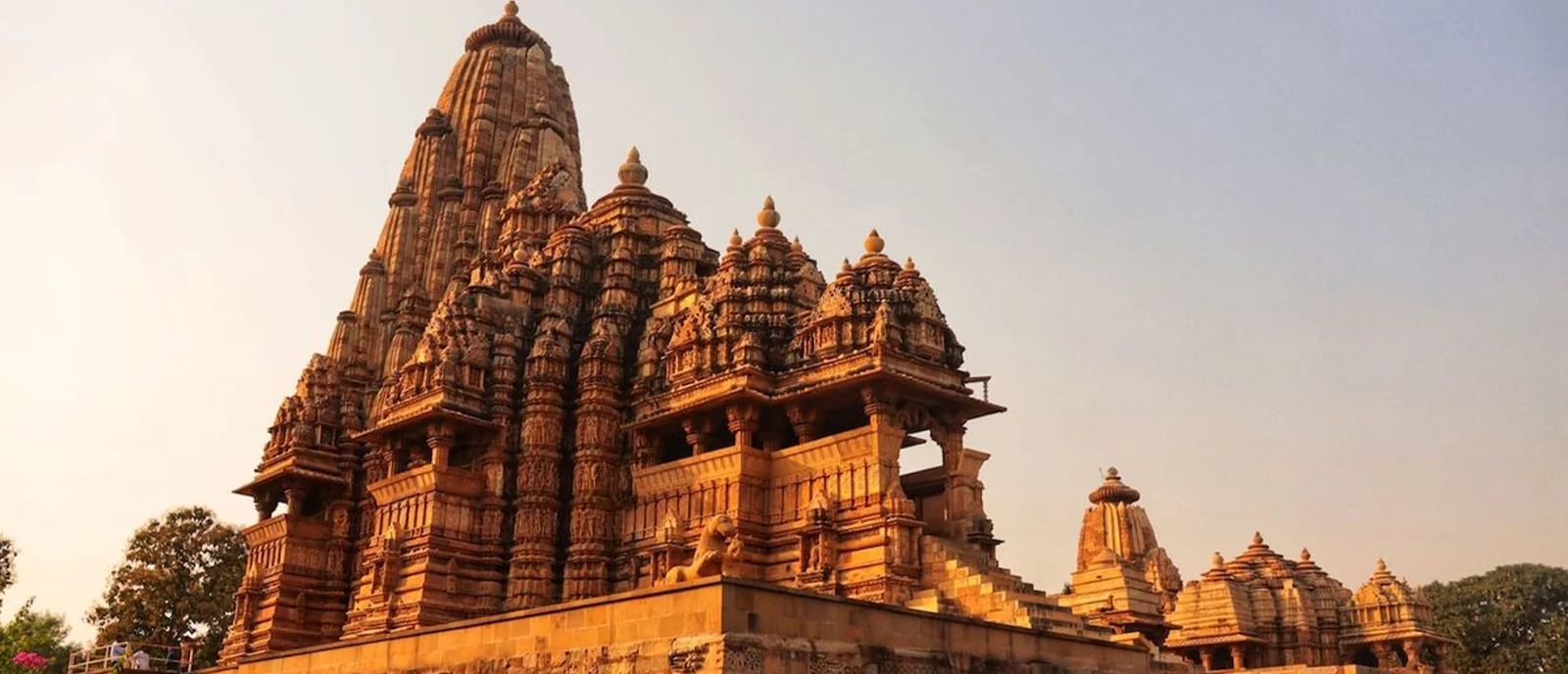
Tucked away in the heart of Madhya Pradesh lies one of India’s most iconic and mystical destinations—Khajuraho. Known for its UNESCO World Heritage temples, Khajuraho is a stunning fusion of divine spirituality and intricate artistry, making it a must-visit for travelers seeking history, culture, and architecture in one powerful experience.
While most associate Khajuraho with its erotic sculptures, the temples tell a much deeper story—one of divine union, celestial beauty, and artistic mastery that transcends time. Whether you’re a spiritual seeker, a history buff, or an architecture lover, the temples of Khajuraho offer a truly immersive journey.
In this blog, we take you through the top temples to visit in Khajuraho, and offer the perfect place to stay—The LaLiT Temple View Khajuraho, located just a short walk away from the temple complex and offering a serene blend of luxury and tradition.
If you visit just one temple in Khajuraho, let it be the Kandariya Mahadev Temple. Dedicated to Lord Shiva, this 11th-century marvel is the largest and most ornate temple in the complex. Rising nearly 31 meters in height, the temple is designed to resemble Mount Meru—the sacred mountain at the center of the universe in Hindu cosmology.
Why Visit:
Visiting Kandariya Mahadev during sunrise or golden hour brings out the temple's honey-colored sandstone in full glory. A guide can help interpret the symbolism, turning your visit into a sacred and artistic experience.
One of the oldest and most significant temples in Khajuraho, the Lakshmana Temple was built in the 10th century by King Yashovarman to honor Lord Vishnu. Architecturally symmetrical and richly decorated, the temple is known for its perfect proportion and spiritual significance.
What Makes It Special:
This temple is a favorite for travelers interested in the confluence of art, mythology, and Hindu philosophy.
One of the most beautifully preserved temples in Khajuraho, the Devi Jagdamba Temple is dedicated to the Mother Goddess. The temple’s graceful proportions and intricate sculptures celebrate feminine divinity in its most powerful form.
Highlights:
Couples often find this temple especially moving—a symbolic reminder of strength, love, and divine beauty.
While the three temples above represent the spiritual and artistic pinnacle of the site, Khajuraho has more than 20 surviving temples across three groups—Western, Eastern, and Southern.
Each temple brings its own narrative, visual poetry, and spiritual presence.
When visiting a place as culturally rich as Khajuraho, your stay should be more than just accommodation—it should be an extension of the experience. That’s where The LaLiT Temple View Khajuraho comes in.
Located just a few hundred meters from the Western Group of Temples, this luxury boutique hotel offers you not only proximity but also a peaceful, immersive stay infused with heritage and hospitality.
The hotel’s serene gardens, attentive staff, and cultural programs offer a holistic experience—ideal for solo travelers, history enthusiasts, and couples on a spiritual getaway.
Khajuraho may be known for its temples, but there’s more to explore for those who like to wander deeper.
Held every evening near the Western Group, the sound and light show brings alive the history of Khajuraho with voiceovers (including one by Amitabh Bachchan), music, and dramatic lighting against temple backdrops.
Just 20 km from Khajuraho, this natural wonder is formed by the Ken River cutting through volcanic rock, creating a deep gorge of multicolored granite. It’s ideal for a picnic or a romantic detour.
Combine culture with wildlife at Panna Tiger Reserve, about 45 minutes from Khajuraho. Safaris here offer a chance to spot tigers, leopards, crocodiles, and exotic birds.
Khajuraho is more than just stone and sculpture—it’s a living testimony to India’s pluralistic past, spiritual depth, and architectural genius. Walking through its temples is like flipping through chapters of ancient scriptures, sensual poetry, and divine myths carved into eternal stone.
And when you retire to The LaLiT Temple View Khajuraho at the end of the day, you carry with you the peace, history, and divine energy of this extraordinary destination.
Final Tip: The best time to visit Khajuraho is from October to March, when the weather is pleasant. Consider aligning your trip with the Khajuraho Dance
Festival (February)—an exquisite celebration of classical Indian dance performed against the backdrop of illuminated temples.
Let the stones speak, let the temples tell their tales, and let your soul soak in the divine beauty of Khajuraho.
I'm glad to hear that you found the blog helpful! If you have any questions or need further assistance on any topic covered in the blog, feel free to ask. I'm here to help!